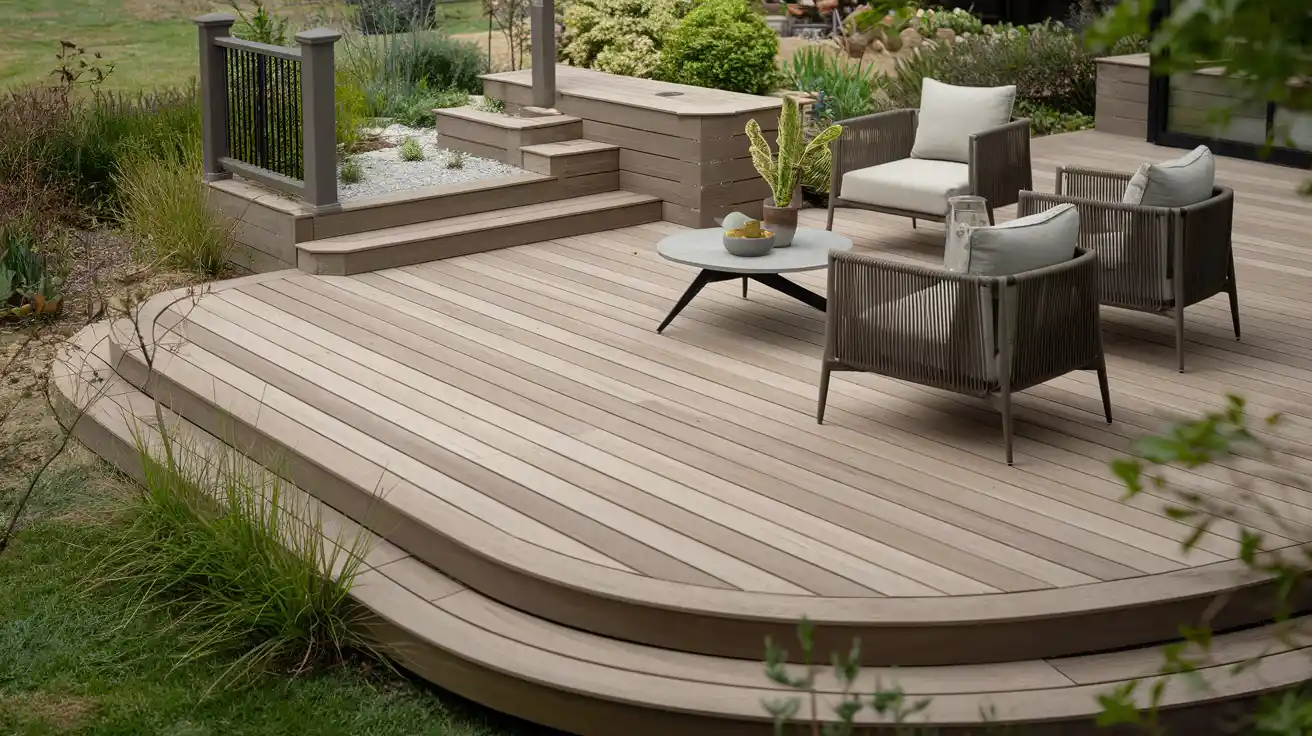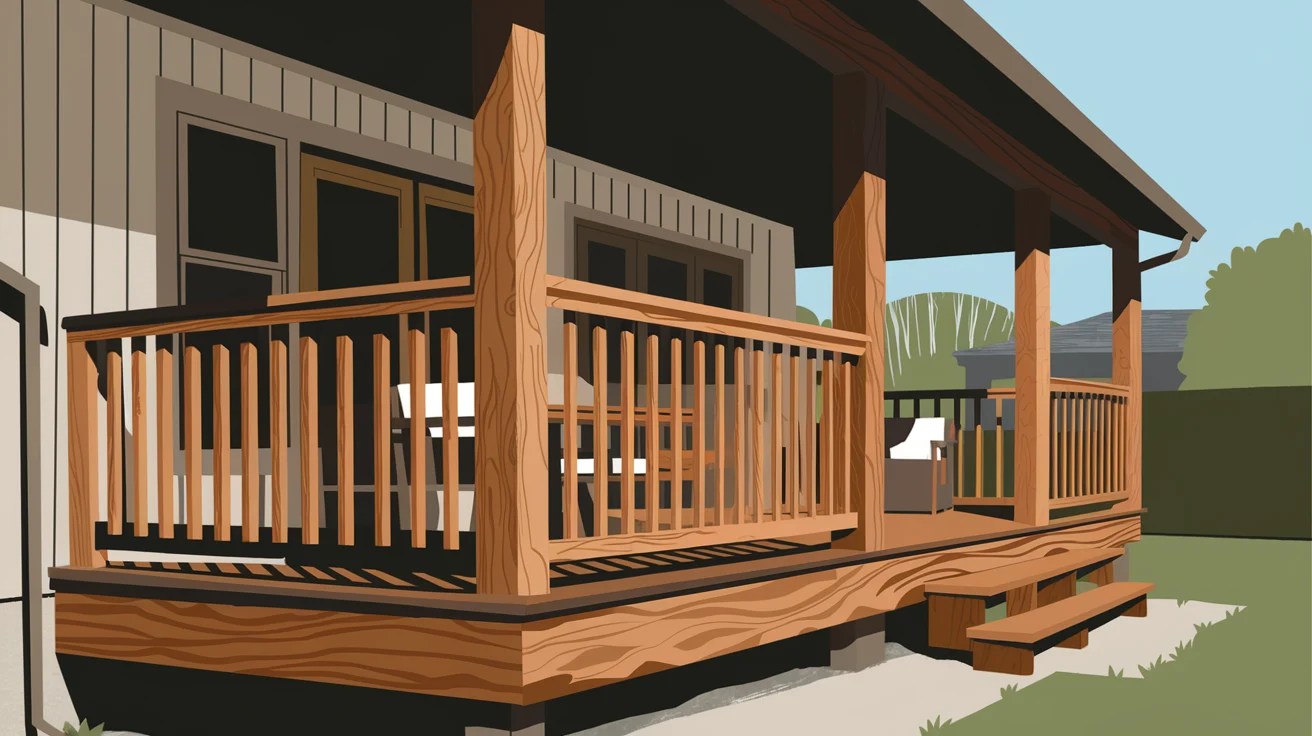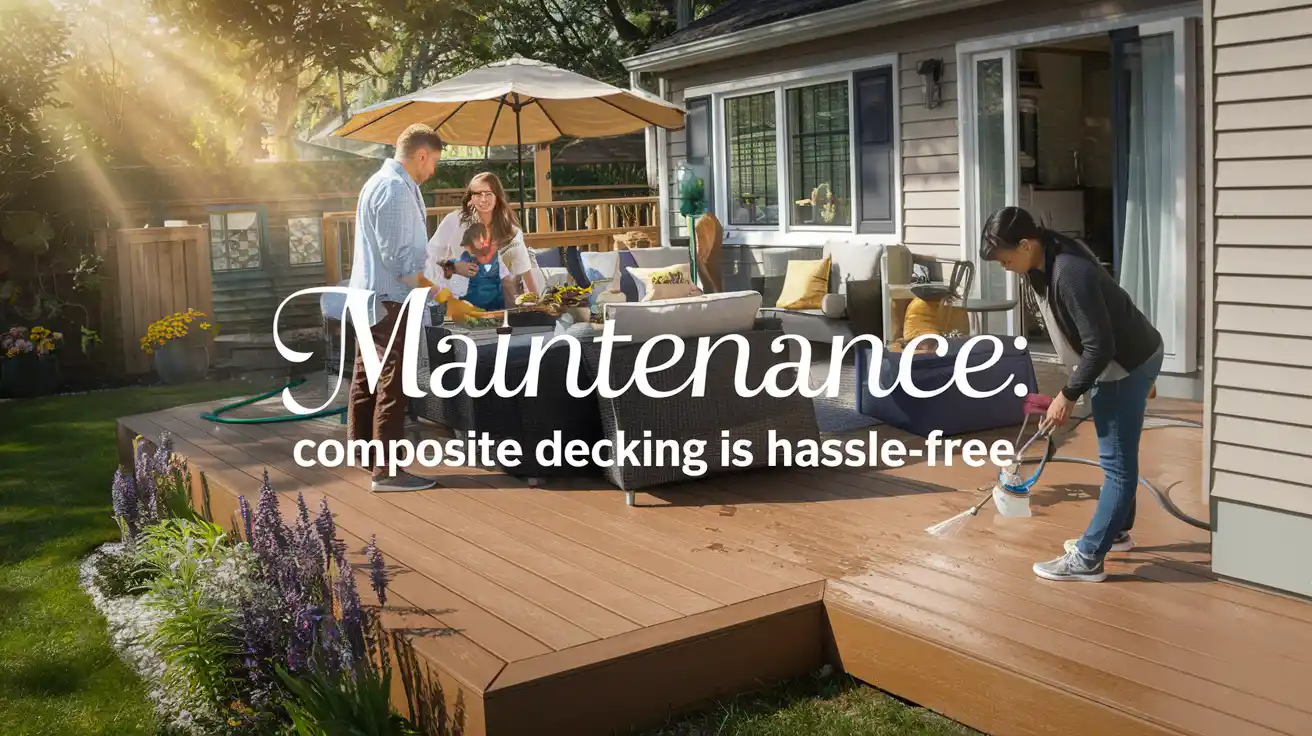When it comes to enhancing your outdoor space with a deck, choosing the right material is crucial. Decking materials not only influence the aesthetic appeal but also affect the longevity, maintenance, and overall cost of your deck. For many years, traditional wood has been the go-to choice for homeowners. However, with advancements in technology, composite decking boards have become a popular alternative.
In this blog post, we’ll delve into the key differences between composite decking boards and traditional wood. We’ll explore why more homeowners are making the switch to composite materials, focusing on factors such as durability, maintenance, cost, and environmental impact.
1. What Is Composite Decking?

Composite decking is a man-made product consisting of a mix of wood fibers, recycled plastic, and bonding agents. These materials are blended and formed into planks that resemble natural wood. Composite decking boards are designed to look like traditional wood but offer superior performance in terms of durability, maintenance, and longevity.
Unlike traditional wood, which is susceptible to rot, splintering, and insect damage, composite decking is engineered to withstand the harsh outdoor environment. It comes in a variety of colors, finishes, and textures, allowing homeowners to achieve the look they desire without the drawbacks of natural wood.
Key Features of Composite Decking Boards
- Durability: Composite decking is resistant to rot, insects, and weather damage.
- Low Maintenance: Unlike wood, composite decking does not require sanding, staining, or sealing.
- Eco-Friendly: Many composite decking boards are made from recycled materials, making them an environmentally friendly option.
- Variety: Composite decking comes in a wide range of colors and styles, allowing for customization to fit any outdoor space.
2. What Is Traditional Wood Decking?

Traditional wood decking refers to natural wood planks used to build outdoor decks. Common types of wood used for decking include cedar, redwood, and pressure-treated pine. While wood decking has a classic and timeless appearance, it requires regular maintenance to keep it looking good and to prevent damage.
Wood is a natural material, which means it is vulnerable to environmental factors such as moisture, insects, and temperature fluctuations. Homeowners who choose wood decking often need to invest time and effort into maintaining its appearance and ensuring its longevity.
Key Features of Traditional Wood Decking
- Natural Appearance: Wood decking provides a warm, authentic look that many homeowners appreciate.
- Customization: Wood can be stained or painted in a variety of colors to match personal preferences.
- High Maintenance: Wood requires regular sanding, staining, sealing, and repairs to prevent damage.
- Cost: Wood decking tends to be more affordable upfront, but long-term maintenance costs can add up.
3. Durability: Composite Decking Boards Win

One of the most significant differences between composite decking and traditional wood is durability. Composite decking boards are engineered to withstand the elements, making them a more durable option than wood.
Composite Decking Durability
- Weather Resistance: Composite decking is designed to resist moisture, which means it won’t rot, warp, or crack over time. This makes it an ideal choice for regions with high humidity or frequent rainfall.
- Insect Resistance: Unlike wood, composite decking is impervious to termites and other wood-boring insects. This adds to its lifespan and ensures that your deck remains structurally sound for years to come.
- UV Resistance: Many composite decking products are UV-resistant, meaning they won’t fade or discolor when exposed to sunlight. Traditional wood, on the other hand, often fades over time unless it is regularly treated.
Traditional Wood Durability
While wood is strong and sturdy, it is more vulnerable to environmental factors than composite decking. Moisture, insects, and UV exposure can all take a toll on wood decking, leading to warping, cracking, and splintering.
- Moisture Damage: Wood is highly susceptible to moisture, especially if it’s not sealed properly. Over time, moisture can cause wood to swell, warp, and eventually rot.
- Insect Infestation: Wood decking is a prime target for termites and other insects that can compromise the structural integrity of the deck.
- Fading and Weathering: Traditional wood decking will fade when exposed to the sun. It can also develop a weathered, gray appearance if not regularly treated and maintained.
Durability :
When it comes to durability, composite decking boards have a clear advantage. They are engineered to resist the elements, ensuring that your deck remains strong and beautiful for years with minimal maintenance.
4. Maintenance: Composite Decking Is Hassle-Free

One of the main reasons homeowners are making the switch to composite decking is the low maintenance required to keep it looking great. Traditional wood, on the other hand, demands regular upkeep to prevent it from deteriorating over time.
Composite Decking Maintenance
- No Sanding, Staining, or Sealing: Composite decking requires virtually no maintenance. Unlike wood, which needs to be sanded, stained, and sealed regularly, composite boards maintain their appearance with just occasional cleaning.
- Easy Cleaning: To clean composite decking, all you need is soap, water, and a soft brush. This makes it easy to keep your deck looking fresh and new without the need for labor-intensive upkeep.
- Resistant to Stains and Scratches: Composite decking is resistant to stains from food, drinks, and outdoor debris. It’s also less likely to get scratched or damaged compared to traditional wood.
Traditional Wood Maintenance
- Frequent Sealing and Staining: Wood decking requires regular maintenance to protect it from moisture, UV damage, and insects. Homeowners need to seal and stain their wood decks every few years to maintain their appearance and prevent damage.
- Repairs: Wood decking is prone to warping, cracking, and splintering. Over time, these issues will require repairs or even replacement of individual boards.
- Labor-Intensive Cleaning: Wood decking can develop mold, mildew, and algae, especially in damp climates. Cleaning a wood deck requires more effort and sometimes special cleaning solutions or pressure washing.
Maintenance :
For homeowners looking for a low-maintenance option, composite decking boards are the clear winner. With composite decking, you can enjoy your outdoor space without the hassle of constant upkeep.
5. Cost: Long-Term Investment vs. Upfront Savings

Cost is always a major consideration when choosing between composite decking boards and traditional wood. While wood is often more affordable upfront, the long-term costs associated with maintenance and repairs can make it more expensive in the long run.
Composite Decking Cost
- Higher Initial Cost: Composite decking boards tend to be more expensive upfront compared to traditional wood. However, many homeowners view this as an investment, as the long-term maintenance costs are significantly lower.
- Lower Lifetime Cost: Over the life of the deck, composite decking is more cost-effective. Because composite decking requires minimal maintenance and lasts longer, homeowners save money on repairs, sealing, and staining.
Traditional Wood Cost
- Lower Initial Cost: Wood decking is often more affordable initially, making it an attractive option for budget-conscious homeowners.
- Higher Long-Term Cost: While the upfront cost of wood may be lower, the ongoing maintenance costs can add up over time. Regular sanding, staining, sealing, and repairs can make wood decking more expensive in the long run.
Cost :
While traditional wood decking may be cheaper upfront, composite decking offers better long-term value due to its durability and low maintenance requirements.
6. Environmental Impact: Composite Decking Is More Sustainable

With growing concerns about environmental sustainability, many homeowners are looking for eco-friendly options when it comes to decking materials. Composite decking is often considered a more sustainable choice compared to traditional wood.
Composite Decking Environmental Impact
- Made from Recycled Materials: Many composite decking boards are made from a mix of recycled wood fibers and plastic, reducing the demand for new raw materials.
- Longer Lifespan: Because composite decking lasts longer than wood, fewer resources are required over time to repair or replace it.
- No Harmful Chemicals: Composite decking does not require harmful chemicals, such as stains, sealants, or pesticides, which can leach into the environment.
Traditional Wood Environmental Impact
- Deforestation: Harvesting wood for decking contributes to deforestation, which has significant environmental consequences. While some woods, such as cedar and redwood, come from sustainable sources, not all wood is harvested responsibly.
- Chemical Treatments: Many wood decking products, especially pressure-treated wood, are treated with chemicals to protect against rot and insects. These chemicals can be harmful to the environment.
Environmental Impact :
For homeowners looking to reduce their environmental footprint, composite decking boards offer a more sustainable choice. The use of recycled materials and the lack of harmful chemicals make composite decking a greener option.
7. Aesthetics: Traditional Wood vs. Composite Decking

Aesthetics play a major role in the decision-making process for many homeowners. Both composite decking and traditional wood have their visual appeal, and the right choice depends on your personal preference.
Composite Decking Aesthetics
- Variety of Styles and Colors: Composite decking comes in a wide range of colors, textures, and finishes, allowing homeowners to achieve the exact look they desire. Whether you want the appearance of natural wood or something more modern, composite decking can accommodate your preferences.
- Consistency: Composite decking boards are manufactured to have a consistent appearance, with no knots, grain variations, or imperfections that are commonly found in natural wood.
- No Fading or Weathering: Composite decking is designed to resist fading and weathering, ensuring that your deck looks new for many years.
Traditional Wood Aesthetics
- Natural Beauty: Wood decking has a classic, natural beauty that many homeowners find appealing. The unique grain patterns and warm tones of wood can’t be fully replicated by composite materials.
- Custom Staining: Wood can be stained or painted in a wide variety of colors, allowing for customization to match your home’s exterior.
Aesthetics :
While traditional wood has a timeless, natural beauty, composite decking offers more variety and customization options, making it a versatile choice for homeowners who want to achieve a specific look.
8. Why You Should Make the Switch to Composite Decking Boards

With all the advantages of composite decking boards — from durability and low maintenance to environmental sustainability and long-term cost savings — it’s no wonder that more homeowners are making the switch from traditional wood. While the upfront cost of composite decking may be higher, the benefits far outweigh the initial investment.
Key Reasons to Switch to Composite Decking
- Longevity: Composite decking boards can last up to 25-30 years, outlasting traditional wood by a significant margin.
- Low Maintenance: Say goodbye to constant sanding, staining, and sealing. Composite decking requires minimal upkeep, allowing you to enjoy your outdoor space without the hassle.
- Environmental Impact: Composite decking is made from recycled materials, making it a more eco-friendly choice compared to wood.
- Variety and Customization: With composite decking, you can choose from a wide range of colors and finishes to achieve the look you want.
If you’re planning to build or upgrade your deck, consider making the switch to composite decking boards. Not only will you save time and money on maintenance, but you’ll also enjoy a deck that stays beautiful and functional for many years.

